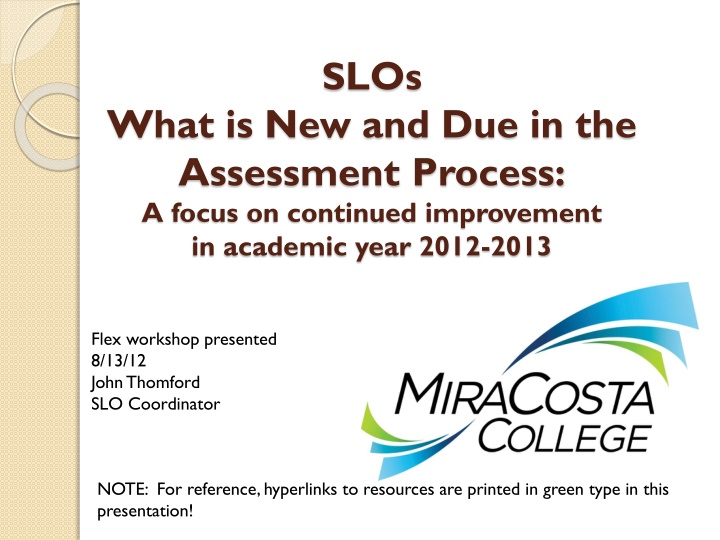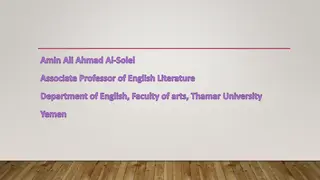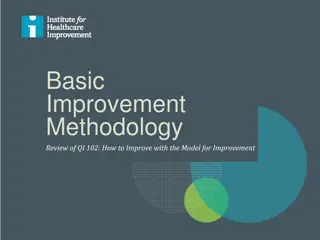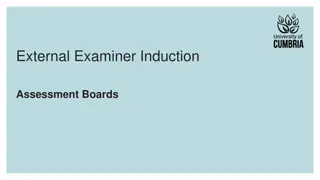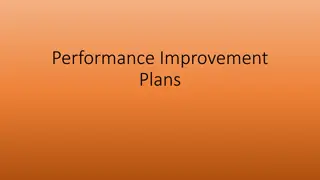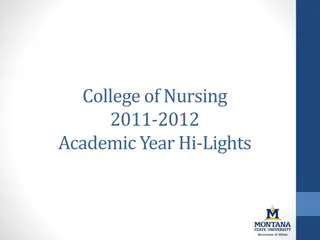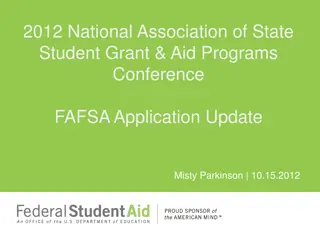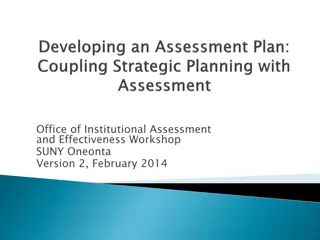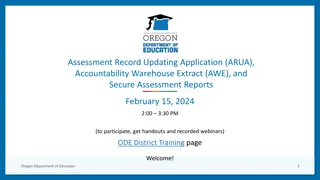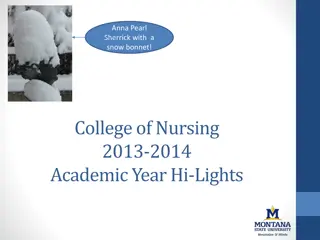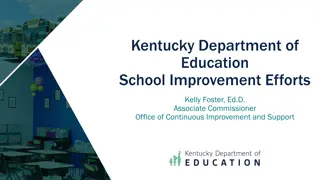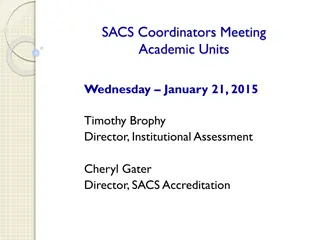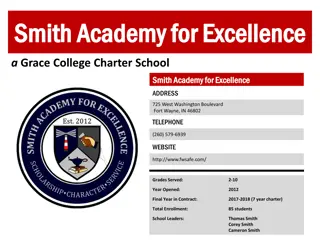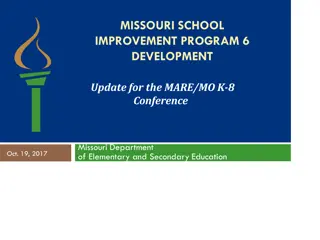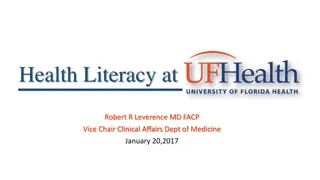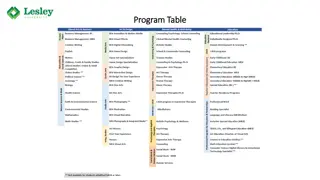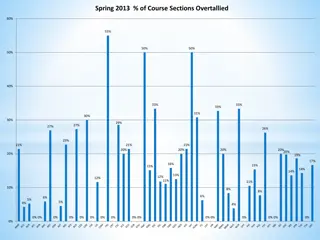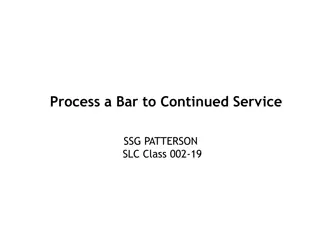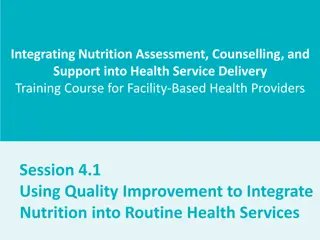Assessment Process for Continued Improvement in Academic Year 2012-2013
Focus on refining CSLOs/PSLOs, developing assessment methods, evaluating SLOs, and utilizing data for student success improvement. Aligning with institutional goals and ACCJC proficiency standards for sustainable quality improvement.
Download Presentation

Please find below an Image/Link to download the presentation.
The content on the website is provided AS IS for your information and personal use only. It may not be sold, licensed, or shared on other websites without obtaining consent from the author.If you encounter any issues during the download, it is possible that the publisher has removed the file from their server.
You are allowed to download the files provided on this website for personal or commercial use, subject to the condition that they are used lawfully. All files are the property of their respective owners.
The content on the website is provided AS IS for your information and personal use only. It may not be sold, licensed, or shared on other websites without obtaining consent from the author.
E N D
Presentation Transcript
SLOs What is New and Due in the Assessment Process: A focus on continued improvement in academic year 2012-2013 Flex workshop presented 8/13/12 John Thomford SLO Coordinator NOTE: For reference, hyperlinks to resources are printed in green type in this presentation!
2 of 5 Institutional Goals directly relate to Outcomes Assessment Goal II. MiraCosta Community College District will become the institution where each student has a high probability of achieving academic success. Goal III. MiraCosta Community College District will institutionalize effective planning processes through the systematic use of data to make decisions.
Hierarchy & Relationship of Outcomes Institution Mission & ISLOs Office of the President IS SS BAS AUOs PSLOs AUOs SS BAS IS SSLOs & SAOs Objectives CSLOs
1. Develop/Refine CSLOs or PSLOs: The SLO Cycle 2. Develop assessment methods, benchmarks of achievement, evaluation methods 6. Implement refinements &/or action plans. 5. Determine Refinements Needed. Develop action plans intended to improve student success 3. Assess and Evaluate SLOs 4. Invested faculty Collect, Discuss, & Analyze Data Report results in Annual Program Review
Where we are Fulfillment of the recommendations from ACCJC has removed us from sanction Specifically related to the SLO Assessment Process we have minimally achieved Proficiency standards set by ACCJC
ACCJC Evalution Rubric Proficiency Element 5: Element 1: Appropriate resources continue to be allocated and fine-tuned. Student learning outcomes and authentic assessment are in place for courses, degrees and programs. Element 6: Element 2: Comprehensive assessment reports exist and are completed & updated on a regular basis. Results of assessment are being used for improvement and further alignment of institution-wide practices. Element 7: Course student learning outcomes are aligned with degree/certificate student learning outcomes. Element 3: There is widespread institutional dialogue about the assessment results & identification of gaps Element 8: Students demonstrate awareness of SLO goals and purposes of courses and programs in which they are enrolled. Element 4: Decision making includes dialogue on the results of assessment and is purposefully directed toward improving student learning.
Sustainable Continuous Quality Improvement (SCQI) (to support student learning) Processes are ongoing & systematic Pervasive and robust dialogue Evaluation of our processes at all levels Evaluation and fine-tuning of organizational structures Student learning improvement is a visible priority Learning outcomes are specifically linked to program reviews.
- Goals for Spring 2013 to meet ACCJC status report criteria for Proficiency Continue to address and fulfill Proficiency Standards Prepare to validate data and statements that will be made in the ACCJC Status Report which is due March 15, 2013; criteria are now explicitly outlined in a fillable form Move toward achieving Sustainable Continuous Quality Improvement (SCQI)
How do we achieve this? Develop PSLO calendar for each degree & CoA Update 6-year CSLO calendar Assess / Re-assess Record & Recommend (close loop) Integrate CSLOs into curriculum (e.g. assignments) Modify / Create New PSLOs SLO AC Update ADM s (matrices)
How do we achieve this? Widespread Inst l. Dialogue - Meet to discuss PSLOs relevance to overall program & how they will channel into the 5 ISLOs (Institutional Learning Outcomes) Integrate Instructional Services and Student Services SLOs & SAOs where applicable Begin to assess ISLOs Review self-study from report to ACCJC to determine that action plans were implemented
Academic Programs Title 5 definition of a Program: A cohesive set of courses that result in a certificate or degree. For Program Review, some colleges define programs to include courses in a specific discipline. How your department defines it will determine how your PSLO and assessment are written. As of August, 2012 MCC offers 62 AA degrees (including 7 degrees in Liberal Arts) 56 Certificates of Achievement
PSLOs Assess a student s ability to integrate learning from individual courses into a coherent whole. Assess program completers. Identifying program completers may be difficult. Number of program completers may be few each year.
Assessing PSLOs at MCC All AAs and CoAs currently have 1 or more PSLOs written. They are housed in TracDat and ready for data entry. There are various methods of measureable assessment (e.g. Liberal Arts, Math, Auto) Number of completed assessments will not be known until the evaluation results are entered into TracDat by each department.
Entering PSLO evaluation data in TracDat. Reference the TracDat manual for detailed instructions.
http://www.miracosta.edu/instruction/slo/downloads/TracDat_User_Manual.pdfhttp://www.miracosta.edu/instruction/slo/downloads/TracDat_User_Manual.pdf
Work Reduction Standardized assessments Standardized evaluation rubrics Data recording grids* prior to entering data into TracDat Collaborative evaluation of assessments among faculty Incorporating assessments into exams *Hyperlink to a sample grid
